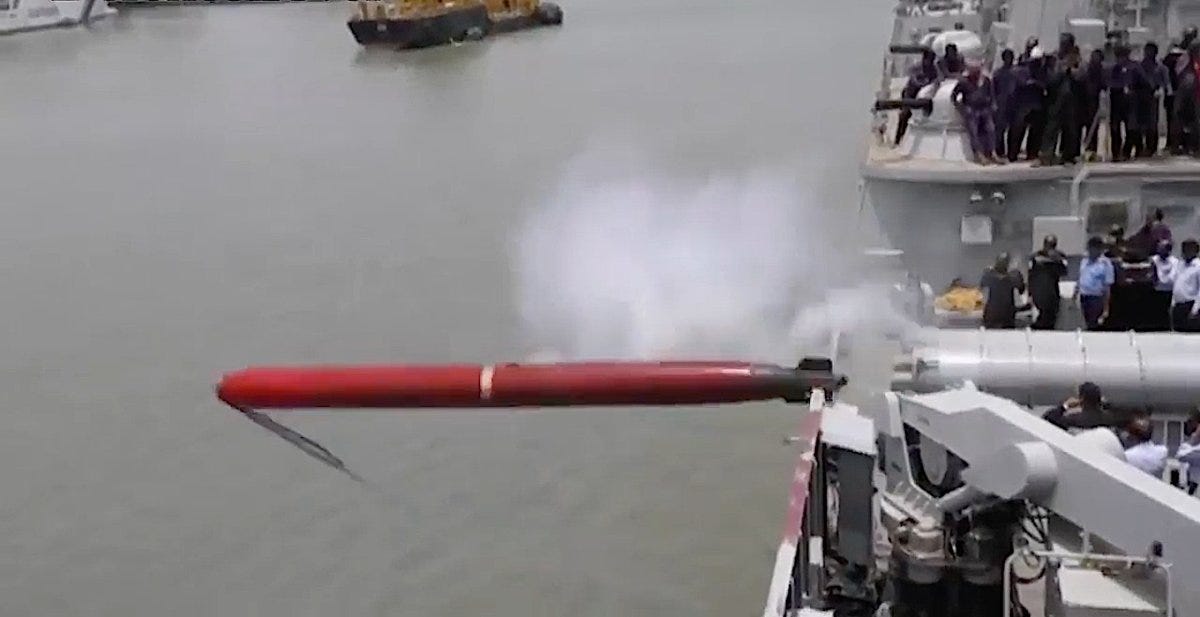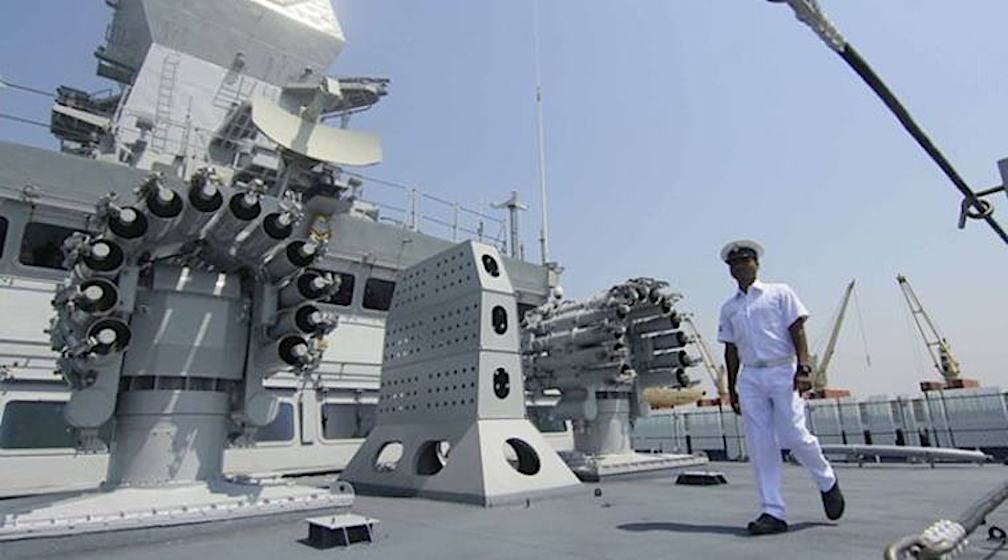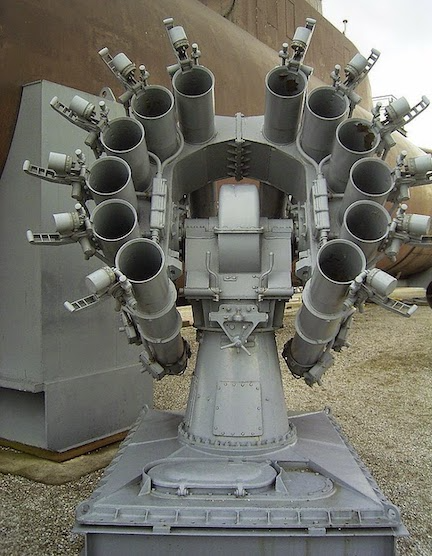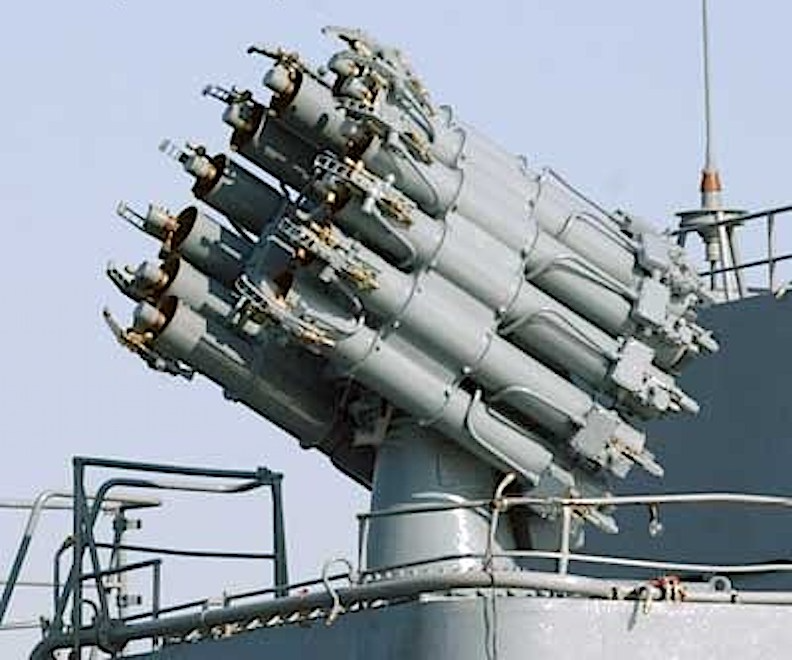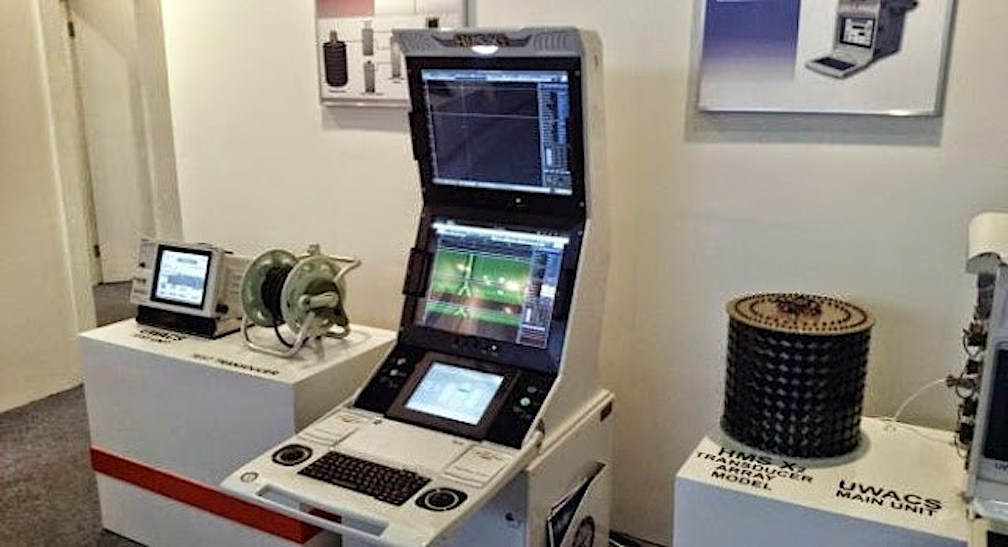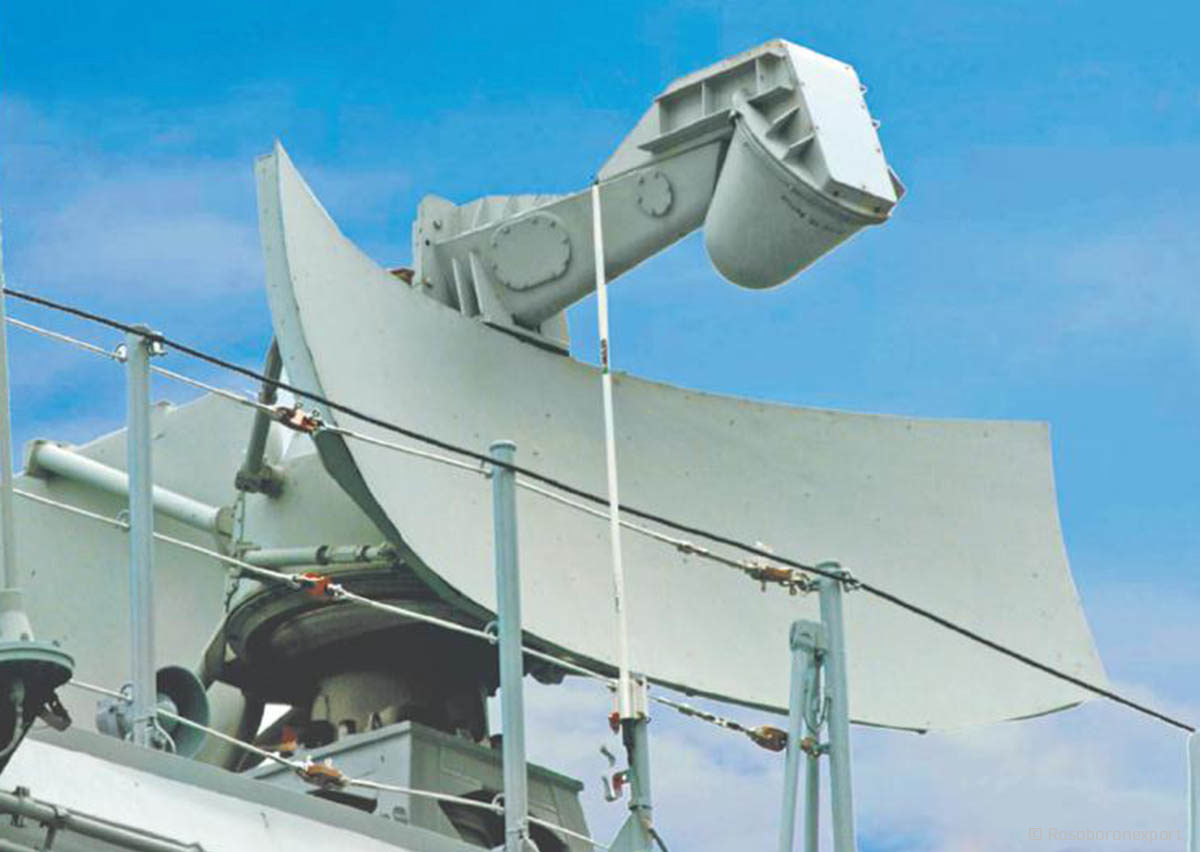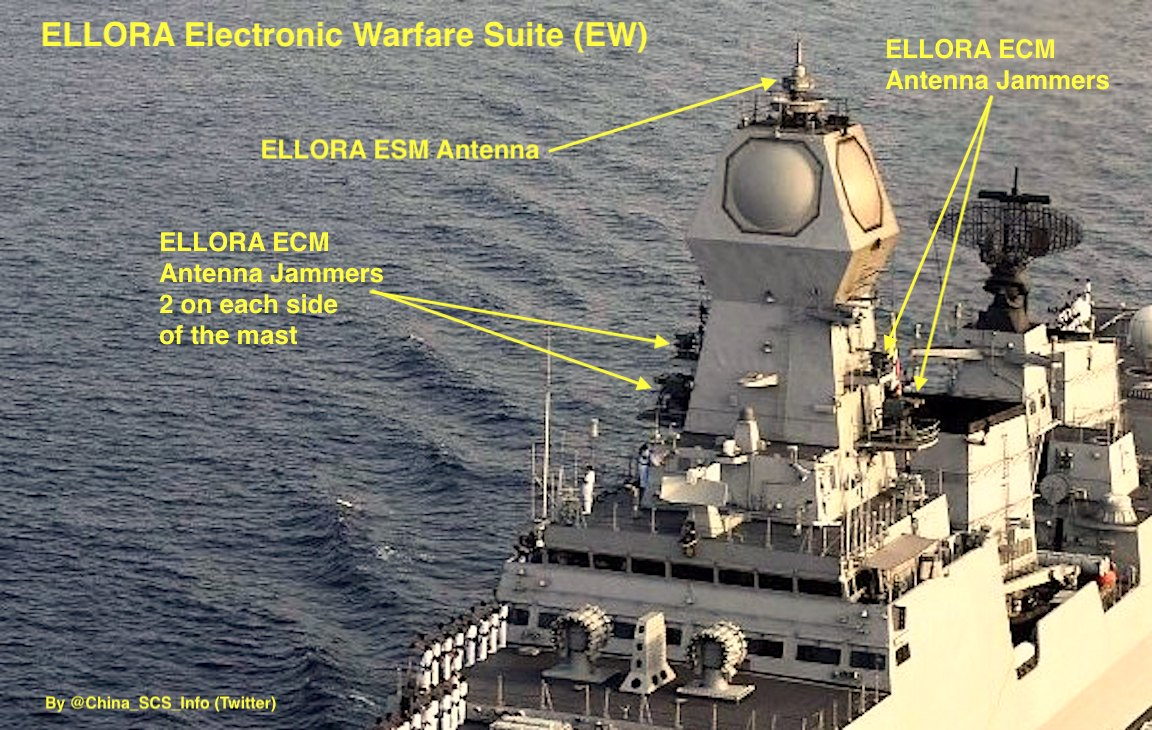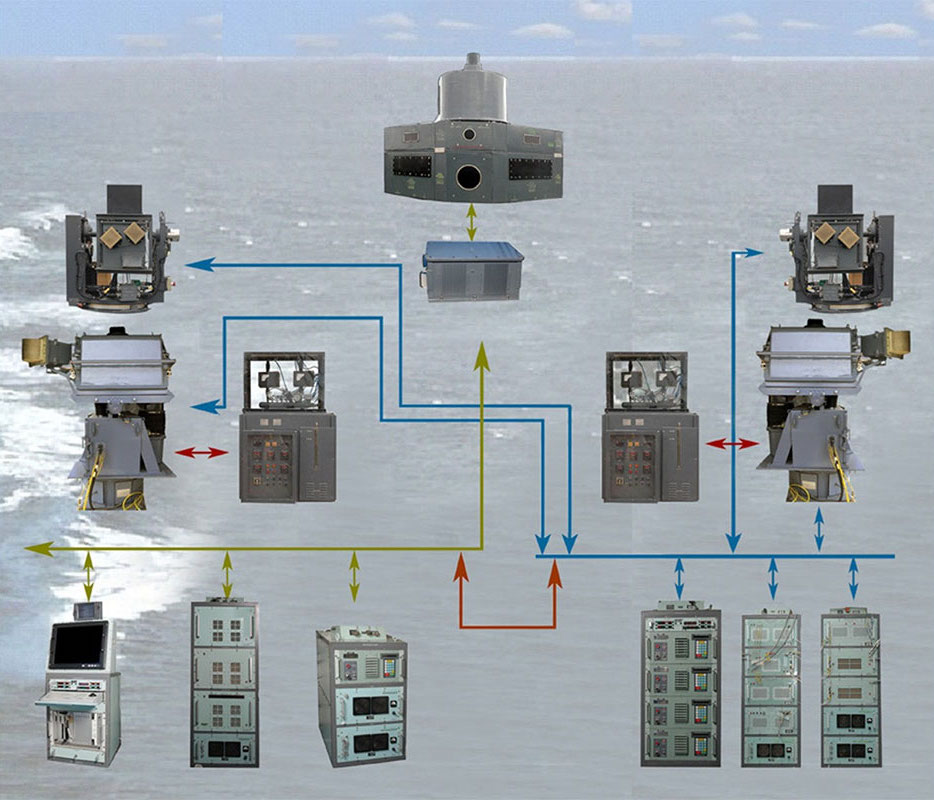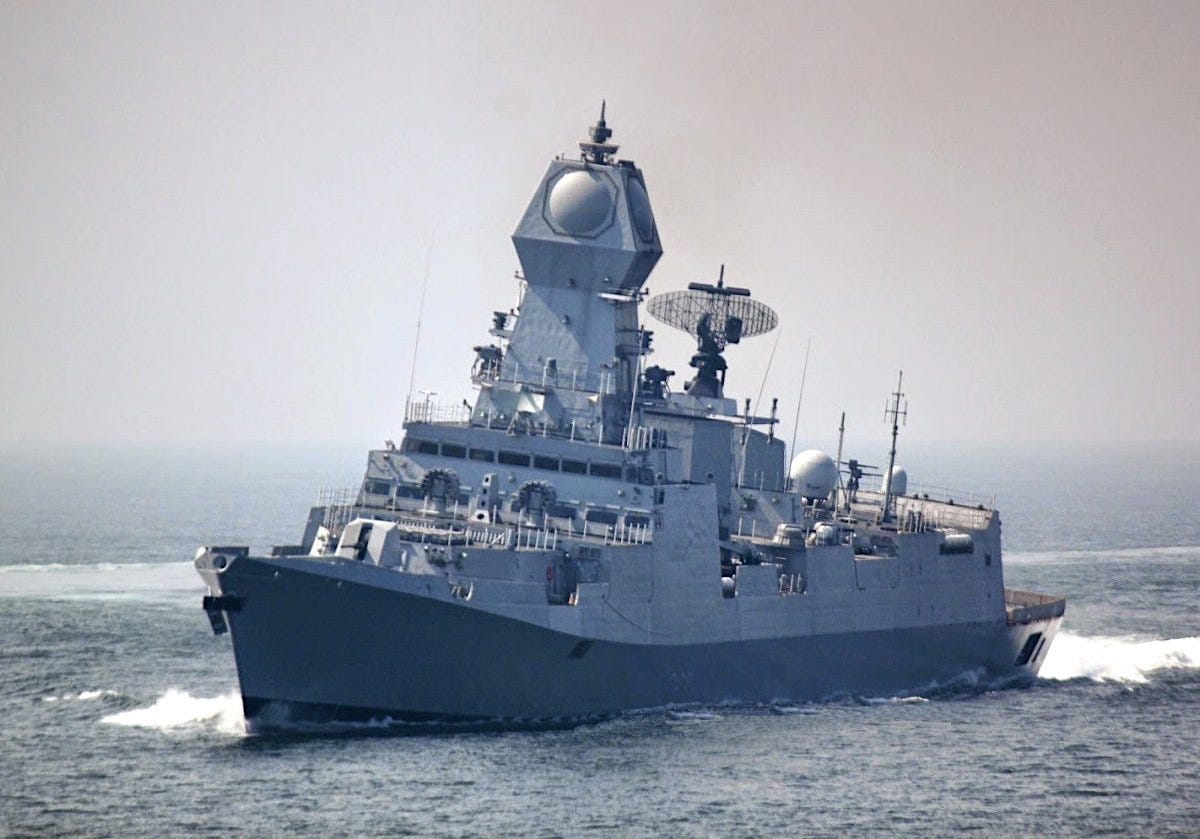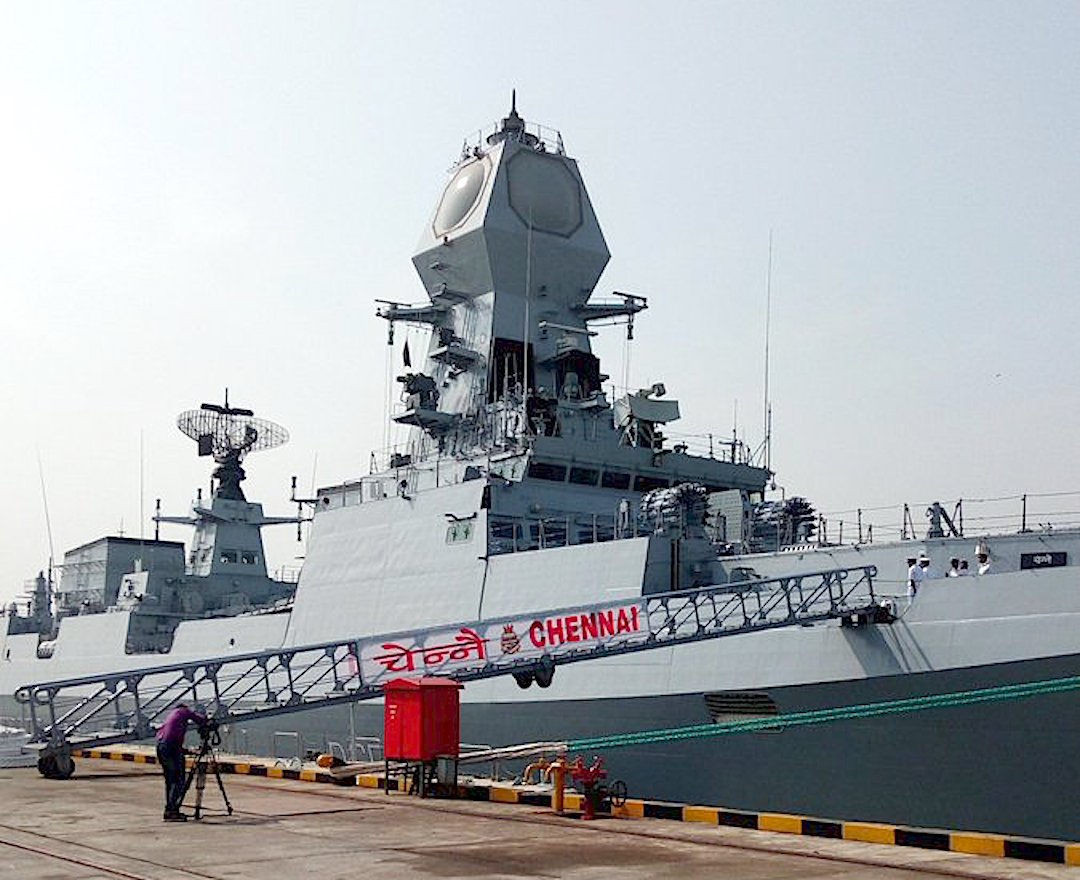| Indian Navy Kolkata Class Destroyers |
| 送交者: 2020年02月18日18:27:36 于 [世界游戏论坛] 发送悄悄话 |
|
|
 The Kolkata destroyer class (Project 15A) are the most powerful surface combat ships of the Indian Navy after the aircraft carriers. The class is made of 3 ships: INS Kolkata, INS Kochi & INS Chennai. The Project 15A Destroyers are the follow-on ships of the legendary Project 15 ‘Delhi’ class Destroyers which entered service in the late 1990s. Conceived and designed by the Indian Navy’s Directorate of Naval Design, the P15A ships have been christened after major port cities of India: Kolkata, Kochi and Chennai.  The Indian Government ordered three Kolkata-class destroyers in May 2000. The ships were built by Mazagon Dock Limited (MDL) at their Mumbai shipyard. INS Kolkata was the first of the class. The ship was laid in September 2003, was launched in March 2006, and delivered to the Indian Navy in July 2014. The vessel was commissioned in August 2014. INS Kolkata took 11 years to build. Program delays were blamed by Defense Minister A. K. Antony on the delay in supply of warship-grade steel by Russia, which forced India to develop its own steel manufacturing capability. The second of class, INS Kochi, was laid on 25 Oct 2005, and launched on 18 Sep 2009 and commissioned in September 2015. It took 10 years to build. The last ship in the class, INS Chennai, was laid in February 2006. It was launched in April 2010 and was commissioned in Nov 21, 2016. It took almost 11 years to complete. Each Kolkata class destroyer had a cost of about $950 million.  Their maximum displacement is 7,500 tons (Unofficially 8100 tons). The Kolkata destroyers measure 163m in length, 17.4m beam & 6.5m draft. Max speed In excess of 30 knots. Range is 3,300 n. miles at 18 knots & a crew of 365 (65 officers & 300 sailors).     Kolkata Class Propulsion The Kolkata propulsion is COGAG (Two combined gas turbines). It includes 2 Zorya M36E gas turbines, 4 DT-59 reversible gas turbines & 2 KVM-diesel engines. It also has MWE Wartsila WCM-1000 & Kirloskar 1 MV AC electrical generators. The intricate power supply management is done using APMS, and remote control and monitoring of machinery is achieved through the ACS. While Machinery Control Rooms (MCR) of previous warships featured manual controls and analogue dials, the MCR onboard the Kochi is completely automated. Officers here monitor firefighting systems, propulsion and auxiliary systems, power generation, the ship’s stabilizers, her air conditioners and four large Reverse Osmosis Plants that provide the ship and her crew with abundant fresh water. The data provided by the MCR’s systems are part of the Ship’s Data Network (SDM), the backbone of what is an information highway onboard the ship. Kolkata Class integrated platform management system (IPMS) The Kolkata Class IPMS was supplied by Canada-based L-3 MAPPS. The L3 MAPPS Integrated Platform Management System (IPMS) provides integrated monitoring and control of ship propulsion, electrical functions, auxiliaries, and damage control machinery, steering and other systems. It also provides a high levels of ship survivability and operational readiness. Most likely, L-3 MAPPS provided a combined solution comprising a comprehensive integrated platform management system (IPMS) and an advanced integrated bridge system (IBS) for the Kolkata class destroyer as it has been done for the Project 28 Kamorta ASW Corvettes. The Indian Navy also uses the IPMS from L-3 MAPPS in the Shivalik frigates. A Bangalore-based subsidiary of L-3 MAPPS was set up in 2002 to specifically undertake systems integration and related software application development to interface the IPMS with the Ukraine-based Zorya/Mashproekt M36E gas turbines of the Project 15A and Project 15B destroyers. L-3 MAPPS’s pioneering integrated platform management system (IPMS) uses advanced computer-based technology to control and monitor platform machinery and systems on-board warships. It comprises sensors, actuators, remote terminal units and real-time data processing for information display and control operations from multifunction consoles. The modular design of L-3 MAPPS’s IPMS with widely-distributed intelligent electronics, interconnected by multiple data buses, enables marine engineers to control and monitor all platform machinery and distribution plus emergency operation systems, from several shipboard locations. This provides total ship survivability through layered redundancy. In addition, L-3 MAPPS’s IPMS incorporates a number of advanced applications, such as an integrated bridge system; a digital gas turbine control system; a battle damage control system; an equipment health monitoring system (including vibration monitoring); an on-board team training system and a digital CCTV system. Kolkata Class Bridge Pictures ATM Based Integrated Shipboard Data Network (AISDN) The Ship can be truly classified as a ‘Network of Networks’ as it is equipped with sophisticated digital networks, such as Asynchronous Transfer Mode based Integrated Ship Data Network (AISDN), Combat Management System (CMS), Automatic Power Management System (APMS) and Auxiliary Control System (ACS). The AISDN is the information highway on which data from all the sensors and weapon ride. Data from the SDM can be tapped across the ship on a need to know basis.A key part of the Ship Data Network System is the Combat Management System (CMS) which processes data from the sensors (radars, sonars and electronic warning systems) and the weapon systems. All of this is primarily routed to the Operations Centre of the warship, though in the event of damage to the Ops Centre during a battle, can be accessed from several stand-alone consoles spread across the ship. Advanced Composite Communication System (ACCS) Kolkata Class carries the ACCS integrated communication system. ACCS is a new generation IP based integrated communication system that provide ship to ship, ship to shore and ship to air communication over VLF, MF, HF, V/UHF. Facilitates radio communication across all bands using a single terminal. Provides centralized configuration, allocation, monitoring and control of equipment and facilitates remote operations within the ship. Kolkata Class Embarked Helicopters & Facilities The Kolkata destroyers have a dual hangar for two helicopters. The Westland Sea King Mk42B ASW helicopter is the standard helicopter, but sometimes use Chetak helicopters for utility missions. The Indian Navy operates the Mk42B Sea King, a version of the Westland WS-61 Sea King which is itself a British version made under license of the American Sikorksky S-61 Sea King helicopter. The Westland Sea Kings were manufactured by AgustaWestland Helicopters in the UK . The aircraft have significant differences from the American version, with Rolls Royce Gnome engines (derived from the US General Electric T58), British-made anti-submarine warfare systems and a fully computerized flight control system. The Sea King was primarily designed for performing anti-submarine warfare (ASW) missions. Sea King Mk.42B Indian Version — The Harpoon In 1982, India signed a contract to purchase several units of the Mk42B Sea Kings (nicknamed The Harpoon), an upgraded version of the British Sea King equipped for anti-submarine warfare, with dipping sonar, advanced avionics, and anti-shipping operations with two Sea Eagle missiles. It’s also used for search & rescue roles. A team of Indian engineers was sent to Britain to help develop the Mk42B’s avionics, especially the onboard software. Changes from the older Sea Kings included an uprated Gnome H1400–1T engines with 1,240 kW (1,660 SHP), a brand new avionics suite, the use of composite materials throughout the fuselage, the BERP composite rotor blades, and a new five-blade composite tail rotor. Also new was the integration of the Sea Eagle missile, which had been procured from Britain in 1983. Between 1988 and 1992, a total of 20 Mk42B Sea Kings were delivered to the Indian Navy (21 were built, one crashed before delivery). Seventeen of the Sea King helicopters will be upgraded. The upgrade will feature day and night capability, capability to work in adverse weather conditions, integration of two anti-ship missiles with a range of fifty kilometers and a new radar. The Sea king Mk.42B was the first Indian Navy helicopter designed as a full, integrated weapon system with its own sensors and processing, command and control systems that is completely independent of the ship that it operates from. The Sea king Mk.42B surface search/tracking radar is the MEL Super Searcher radar and its located in a drum radome on the spine of the helicopter. For anti-ship warfare, the helicopter can carry two Sea Eagle anti-ship missiles. Sea Eagle from MBDA (formerly Matra BAE Dynamics, UK) is an all-weather, fire-and-forget, sea-skimming anti-ship missile, with a range of 100km. Guidance is by inertial navigation system with active radar homing. Sea Eagle is carried by British and Indian Navy Sea Kings. For ASW warfare, the helicopter can carry four Whitehead A244S torpedoes. It can also be armed with four Mk11 depth charges. The ASW helicopter is equipped with the Alcatel HS-12 dipping sonar that can operate to a depth of 220 meters. AQS-902B acoustic processor. Sonobuoy dispensers for mini-sonobuoys supplied by Ultra Electronics. The magnetic anomaly detector is the AN/ASQ-504(V) AIMS from CAE Electronics. For ASW operation, the sonar is dropped into the water with a holding cable and a wire for data transfer. The sonar searches for submarines either through passive listening (of propeller noise) or active acoustic pinging. The crew in the helicopter listen for the enemy submarine and once tracked and identified, can launch homing torpedoes or drop depth charges. Indian Sea kings also have an acoustic processing system and data links to listen into signals from sonobuoys dropped by the helicopter or by other friendly aircraft on the same ASW mission. The sonobuoys are disposable one time use sonars. The helicopter’s navigation systems include the Thales Doppler 71 navigation radar, Honeywell AN/APN-171 radar altimeter and MK31 automatic flight control system from Smiths Newmark. Marconi Hermes ESM. A Chelton 7 homing system to detect and locate the distress signals from emergency beacons. Technical Specs Maximum speed: 129 mph (112 knots, 208 km/h) (max cruise at sea level) Range: 764 mi (664 nm, 1,230 km) Rate of climb: 2,020 ft/min (10.3 m/s) Height: 16 ft 10 in (5.13 m) Empty weight: 14,051 lb (6,387 kg) Loaded weight: 21,000 lb (9,525 kg) Max. take off weight: 21,400 lb (9,707 kg) (overload weight) Power Plant: 2 × Rolls-Royce Gnome H1400–2 turboshafts, 1,660 Shp (1,238 kW) each Propellers: Five bladed rotor Armament 4× Mark 44, Mark 46 or Sting Ray torpedoes or 4× Depth charges 2 x Sea Eagle anti-ship missiles Provision for a door mounted machine gun of various calibers HAL Chetak Helicopter The HAL Chetak Multipurpose Helicopter is an improved version of the French SA 316 Alouette III from Aérospatiale made in India by HAL (Hindustan Aircraft limited) under French license since 1977. The Chetak serve in the Navy and the Coast Guard since 1969 as light transports, air to sea rescue, patrol, training roles etc. There is also an anti-submarine version. There is also a recent version for ELINT (Electronic Intelligence) / ESM (Electronic Support Measures) roles using the domestic KITE ESM system. There is an upgraded version of the Chetak with Turbomeca TM 333 2M2 engines called the Chetan. The name Chetak means the horse ridden by Maharana Pratap at the Battle of Haldighati, in 1576. The Chetak is an all weather, spacious helicopter, simple in design, highly maneuverable and well suited to flying over sea conditions. It has a tricycle type undercarriage, folding blades and can carry seven passengers including the pilots. The Chetak is a single engine turbine driven helicopter. The automatic starting system gives the Chetak an uncommon instant start capability cutting down the time from start to take off to less than a minute. The Chetak ASW version called the Medium range Antisubmarine Torpedo Carrying Helicopter (MATCH) is equipped with antisubmarine weapons comprising two depth-charges or two Whitehead A244S antisubmarine torpedoes or a mix of both. A total of 85 Chetaks had been inducted into the Navy, of which 19 have been lost, leaving 66 in service. The Coast Guard operates 17 units. The HAL Chetak was scheduled to be replaced by the Dhruv ALH, but the navy declared the Dhruv unsuitable as an ASW platform. As an option, the Chetak can be re-engined with the Turbomeca TM 333–2B engine. The first test flight of the upgraded Chetak, dubbed “Chetan”, was carried out in February 2005. In 2012 the Indian Navy launched a global tender for the purchase of 56 light Naval Utility Helicopters (NUH) to replace the ageing HAL Chetak. However, the tender was cancelled in August 2014. Technical Specs Maximum Speed: 113 knots (210 km/h). Cruise speed is 185 km ph Kolkata Class Weapon Systems The missile systems include 32 Barak 8 (LR-SAM) air defense missiles & 16 Brahmos anti ship missiles with extra space available for future add ons. Other weapon systems include a 76mm main gun, 4 AK-630M 30mm guns, 2 RBU-6000 ASW rocket launchers and 2 twin 533mm torpedo launchers. The ships seems to have space for future installation of more VLS systems for new missiles such as Hypersonic Brahmos, Barak 8 ER, Nirbhay, etc. Each Kolkata class destroyer had a cost of about $950 million. BrahMos Missile BrahMos is an anti ship, sea skimming, supersonic cruise missile, whose high speed of up to mach 3 makes it very difficult to intercept. BrahMos is based on the Russian P-800 Oniks cruise missile. It is a joint venture between the Russian Federation’s NPO Mashinostroyeniya and India’s Defence Research and Development Organization (DRDO) who together have formed BrahMos Aerospace. The name BrahMos is formed from the names of two rivers, the Brahmaputra of India and the Moskva of Russia. BrahMos is a two-stage missile with a solid propellant booster engine as its first stage which brings it to supersonic speed and then gets separated. The liquid ramjet or the second stage then takes the missile closer to Mach 3 speed in cruise phase. In addition to making it difficult to intercept, the high speed also imparts a greater destructive power due to large kinetic energy on impact. The missile has a flight range of up to 450 km with supersonic speed all throughout the flight, leading to shorter flight time, consequently ensuring lower dispersion of targets, quicker engagement time and non-interception by any known weapon system in the world. It operates on the ‘Fire and Forget Principle’, adopting varieties of flights on its way to the target. Its cruising altitude could be up to 15 km and terminal altitude is as low as 4–5 meters. It carries a conventional warhead weighing 200 Kg. BrahMos can be launched in single or in a salvo from a ship towards single or different types of targets within an interval of 2–2.5 seconds in various trajectories. BrahMos is equipped with stealth technology designed to make it less visible to radar and other detection methods. It has an inertial navigation system (INS) for use against ship targets, and an INS/Global Positioning System for use against land targets. Terminal guidance is achieved through an active/passive radar. The missile’s mid-course guidance is provided by Inertial Navigation System and the terminal course guidance by homing radar seeker. GPS/GLONASS can be added for augmenting the accuracy The latest navigation system uses an Indian chip called G3OM (GPS, GLONASS, GAGAN on a Module). The system weighs around 17 grams, and gives accuracy within five meters using Indian, US and Russian navigation satellites. The system can be used in tandem with and Inertial Navigation System (INS) to provide high-accuracy targeting without using any seeker. Although BrahMos was primarily an anti-ship missile, the BrahMos Block III can also engage land-based targets. It can be launched either in a vertical or inclined position and is capable of covering targets over a 360-degree horizon. Block III had advanced guidance and upgraded software, incorporating high manoeuvres at multiple points and steep dive from high altitude. The steep dive capability of the Block III enables it to hit targets hidden behind a mountain range. Key Features “Fire and Forget” principle of operation High supersonic speed all throughout the flight Long flight range with varieties of flight trajectories Low radar signature Shorter flight times leading to lower target dispersion and quicker engagement Pin point accuracy with high lethal power aided by large kinetic energy on impact Salvo launch capability, where multiple missiles can be fired in different trajectories to hit a single or group of targets The missile’s mid-course guidance is provided by Inertial Navigation System and the terminal course guidance by homing radar seeker. GPS/GLONASS can be added for augmenting the accuracy Technical Specs: PJ-10 Brahmos, anti ship version Size: Length: 8.4 m. Diameter: 0.67 m. Wingspan: 1.7 m Barak 8 (LR-SAM) Air Defense missiles Barak 8 (LR-SAM in the Indian Navy) is a sophisticated Indian-Israeli air defense missile with a range up to 100 km. Barak is the Hebrew word for Lightning. The Indian version of the Barak 8, known in India as LR-SAM was jointly developed by Israel Aerospace Industries (IAI), India’s Defence Research & Development Organization (DRDO), Israel’s Administration for the Development of Weapons and Technological Infrastructure, Elta Systems, Rafael and other companies. Bharat Dynamics Limited (BDL) produces the missiles for India. Barak 8 was specifically designed by Israel to intercept the Russian Yakhont supersonic anti ship missiles deployed by Syria. It combines a medium range and short range missile into one missile, having an amazing minimum engagement range of just 300 m and maximum of 100 km. There are claims that a single Barak-8 can stop a BrahMos as close as 500 m from a ship. It’s also rumored to be capable of performing terminal ballistic missile defense (BMD). Barak 8’s propulsion features a smokeless dual pulse rocket motor as well as trust vector control with very high degrees of maneuverability. Speed starts at mach 2 & increases to mach 5–7 when the second motor is fired during the terminal phase, at which point the active radar seeker is activated to home in on to the enemy track. It has very high G performance with a G rating of 80, higher than the Aster missile which has a G rating of 60. The missile is equipped with a two-way datalink, supporting mid-course updating and terminal updating and validation. The Barak 8 missile utilizes a fully active radar seeker. Instead of depending on a ship or land-based radar to “paint”/illuminate its target at all times, the Barak 8 becomes autonomous once it is close to its target. The active radar seeker gets switched on about 5 to 7 Km short of the target and locks into it. The MF-STAR radar will provide mid-course guidance updates for the missile initially after the launch from the ship. MF-STAR is a multifunction surveillance track and guidance radar used by Kolkata Class ships which can detect sea skimming missiles at a 30–35 km range. There is an ER (extended range) variant of the Barak 8 under development, which will have a maximum range of around 150 km. Designed to engage multiple beyond visual range threats, the low launch signature Barak-8ER is understood to retain the same autopilot/inertial navigation system and active radar seeker guidance as the Barak-8, although some modifications to the software and to the missile control surfaces are likely. The booster increases the length of the missile at launch from its current 4.5 m to nearly 6 m, although the length in flight after the booster has been jettisoned may be slightly less than the base Barak-8 missile, if a TVC is not present. The missile diameter and fin spans are thought to be the same as the base Barak-8. On 29 December 2015 and 30 December 2015 the Indian Navy successfully test-fired the Barak 8 missile from INS Kolkata for the first time. Two missiles were fired at high speed targets, during naval exercises being undertaken in the Arabian Sea. Key Features Long Range up to 100 km Two way data link Active Radar Seeker Missile It can be guided by AWACS planes. 360 degree coverage against multiple threats Vertical Launch with low launch signature Multiple simultaneous engagements in severe saturation scenarios Point defense anti ballistic missile High maneuverability, has a G rating of 80 it operates in conjunction with the MF-STAR Phased array multifunction radar Technical Specs: 76mm Oto Melara Main Gun The 76mm Oto Melara is one of the most popular naval guns ever produced, in service with 60 navies around the world. There are two versions of the gun, the Compact and the Super Rapid (SR). Kolkata class carries the Super Rapid Gun Mount (SRGM). The gun is manufactured in India under license. The gun’s high rate of fire and wide range of ammunition make it effective for short-range anti-missile point defense, anti-aircraft, anti-surface, and ground support. Ammunition includes armor piercing, incendiary, directed fragmentation effects. The Firing rate can be selected from single shot to 120 rds/min. In operational conditions the tactical time is less than 3 seconds and the standard deviation at firing is less than 0.3 mrad, thus providing excellent accuracy. Automatic loading is provided through a revolving magazine and rapid reloading is easily undertaken even during firing action by two ammunition handlers. The “Super Rapid” (SR) is an improved, faster-firing version designed designed with the role of anti-ship missile defense in mind. Accuracy was improved compared to the Compact, partly by reducing the weight of the moving parts which reduced vibration issues. These changes reduced the standard deviation values to less than 0.3 milrads (0.017 degrees) at 1,000 m (1,100 yards) per burst of 10 rounds when fired at the maximum ROF. The gun interfaces with the ship’s Combat Management System and fire control system for a fully remote operation and automated use. Technical specs: Weight: Without Ammo: 7.9 tons (18,000 lb) Caliber: 76.2 mm (3 inches) Barrel length: 62 caliber: 4,724.4 mm (186.00 inches) Shell: 76×636mm / cartridge weight 12.5 Kg (28 lb) Elevation: −15°/+85° — Speed: 35°/s (acceleration: 72°/s2) Traverse: 360° — Speed: 60°/s (acceleration: 72°/s2) Rate of fire: Compact: 85 rounds/min. Super Rapid: 120 rounds/min Muzzle Velocity: 915 m/s (3,000 ft/s) Maximum firing range: HE (high explosive) — 6,296kg — Range: 16km / effective range 8km (4km. vs. air targets at elev. 85°) SAPOM (semi-armored piercing OTO munition) — 6,35kg — Range: 16km SAPOMER (semi-armored piercing OTO munition, extended range) — Range: 20km Feed system: Magazine. Capacity: 80 ready rounds on Compact / 85 on SR Cooling system: Sea water — fresh water for flushing Source: wiki & Leonardo AK-630M 30mm Guns Four AK-630M close-in weapon systems (CIWS) are used for air defense against incoming anti-ship missiles & other guided weapons. The AK-630M is a Soviet era fully automatic 30mm, six-barreled, AO-18Gatling gun used to protect ships from incoming anti ship missiles. The gun fires high velocity HE-FRAG incendiaries or fragmentation tracer projectiles. The system’s primary purpose is defense against anti-ship missiles and other precision guided weapons, but it can also be used against fixed or rotary wing aircraft, ships and other small craft, coastal targets, and floating mines. The maximum rate of fire is 5000 rounds/min while the muzzle velocity is 880 meters per second. The gun has an automatic belt fed by a drum magazine. The range is up to 4000 meters for air targets such as anti-ship missiles and 5000 meters for surface targets. The gun is mounted in an enclosed turret and is directed by radar and television detection and tracking. The full weapon system is called A-213-Vympel-A, which is composed of the AK-630M Gun module, the MR-123–02 Fire Control Radar System, and optical and TV control systems. The TV control system can detect small size ships at the distance of 70 km (36 nm) and small fighter jet targets at 7 Km. This system is completely automatic and does not require human supervision although it can be remotely controlled by an operator from either the control console or via a remotely mounted gunsight. This can be useful in case of damage or to fire on land targets. The system has high jamming immunity due to its electro optical tracking and guidance systems. The gun’s elevation angle is +88 degrees and depression angle is -12 degrees. Unit weight without ammunition and external components is 1850 kg. The gun is provided with 2000–3000 rounds. The length of the barrel is 1620 mm (54 caliber) and the caliber 30×165mm AO-18[N 1]. Kavach chaff decoy system Kolkata class carries the Kavach, a naval decoy system to divert radar-guided anti-ship missiles from their targets and act as a systems for self-defense. The system provides soft kill defense in a three-layered defense scheme (by using rockets with 3 different ranges, hence, 3 layers). The Kavach decoy system releases chaff made up of silver coated glass fiber. The chaff forms a clutter which remains suspended in the air so that the incoming guided missile confuses the chaff as the actual target and gets locked onto the chaff instead of the actual target. The Kavach decoys have three modes of Operation: confusion, distraction and seduction. The Kavach system has chaff rockets of three different versions based on the range: Long Range: 12 km (7.5 mi) Medium Range: 5 km (3.1 mi) Short Range: 1 km (0.62 mi) There are two different launchers of the Kavach rockets: the LRMR launcher for the medium and long range rockets and the SR launcher for the short range Kavach rockets. Kavach is manufactured by The Ordnance Factory Board of India. Elbit Deseaver MK-II decoy control & launching system For missile defense, the ship has the Elbit Deseaver MK-II decoy control & launching system that provides a sophisticated “soft-kill” response to multiple threats from numerous directions by launching an array of fast maneuvering, stabilized rocket launchers at accurate time intervals. Note: Some sources report that Kolkata Class carries the Deseaver system while some other sources claim that the Kavach chaff decoy system is carried, some sources report that both are carried. Since both systems perform the same function, chaff decoys, It’s doubtful that both are carried but the lack of verifiable public information is an issue. I hope to confirm the information in the future and update the article. ASW Weapon Systems and Sensors For ASW warfare, there is a twin-tube launcher on each side of the ship with 533mm torpedoes. Kolkata class currently uses the Russian Type 53K-65KE torpedoes and will later also use the domestic Varunastra torpedoes developed by DRDO. There are also two RBU-6000 ASW rocket launchers and the Maareech Advanced Torpedo Defence System (ATDS) countermeasure launchers. Indigenous Twin Tube Torpedo Launcher (ITTL) The Indigenous Twin Tube Torpedo Launcher (ITTL) is a Heavy Weight Torpedo (HWT) Launching system made by Larsen & Toubro Limited. It has a provision to accept firing commands to launch Anti-Ship and Anti-Submarine torpedoes. Designed for single shot as well as salvo firing of torpedoes through Anti-Submarine Fire Control System, the ITTL is made up of Aluminum Magnesium alloys and is supported by a hydraulically adjustable Torpedo Loading Trolley. In case of emergency, the ITTL can be operated in complete manual mode. Type-53K-65KE Torpedo The Type-53K-65KE torpedo its used exclusively to attack surface ships, has a range of about 19 km & speed of 45 kt (48km/h cruise speed that increases to 74 km/h in the final stage), it has a sonar seeker. Its a wake-homing torpedo that follows the wake of the ship, this being a feature that has no countermeasures to it. Its the only wake-homing torpedo in existence. It weights 2.2 tons and carries a 200 Kg warhead. Varunastra Torpedo The Varunastra is a domestic heavyweight torpedo developed by DRDO’sNaval Science and Technological Laboratory for the Indian Navy and manufactured by Bharat Dynamics Limited. This torpedo has more than 95 per cent indigenous content. The Varunastra was inducted in the Indian Navy on June 2016. The guidance system is wire-guided, active-passive acoustic homing. DRDO stated that Varunastra has been designed with the latest technologies such as high speed and long endurance propulsion, software driven intelligence, conformal array acoustic homing with wide look angle and advanced digital signal processing. Varunastra has conformal array transducer which enables the torpedo to look at wider angles than most common torpedoes. It also has advanced autonomous guidance algorithms with low drift navigational aids, and an insensitive warhead that can operate in a wide variety of combat scenarios. It is the only torpedo in the world to have a GPS-based locating aid. Specs: Range: 40 km, Speed: 40 Knots, Warhead size: 250 Kg, Size: 7.6m long x 533 mm diameter, Weight: 1.25 tons, Maximum depth: 400 meters, Price: $1.77 million RBU-6000 ASW rocket launchers Kolkata class has two RBU-6000 ASW rocket launchers at the front of the ship. The rockets can be launched against submarines & torpedoes up to a 5+ km range & can also be used as an anti-frogman system against combat divers who try to sabotage a ship. The RBU-6000 is basically a naval mortar that fires unguided depth charges. The system can also be used for shore bombardment. The RBU-6000 ASW (also known as Smerch in Russia) rocket launchers are now designated as IRL (Indigenous Rocket Launchers) and is made by Larsen & Toubro Limited. Each launcher has 12 barrels and is automatically reloaded by the 60UP loading system from a below deck magazine. The magazine is either 72 or 96 rounds per launcher. They are used because of their hard kill ability and immunity against countermeasures. The RBU-6000 system is remotely directed by the Burya fire control system of the ship. The weight of a RBU-6000 launcher is 3500 Kg. The rockets have a 213 mm caliber and a range of about 4500m (RGB-60 munition) and a shaped charge warhead which can be set to explode at a particular depth. It can punch a hole in the hull of a submarine or can also be used to defend against an incoming torpedo. The rocket, after it is fired, reaches the required location and falls in the water where it sinks until it reaches its target. The rockets are normally fired in salvos of 1, 2, 4, 8 or 12 rounds. The RBU-6000 system is used very extensively by the Indian Navy, where almost all significant combat ships use it. The RBU-6000 system has been upgraded to the RPK-8 version since 1991 (also known as Smerch-2). The RPK-8 version can use self guided rockets in addition to the unguided depth charges. The upgraded RBU-6000 system using the 90R and 90R1 guided rounds increases the ASW performance by a factor of 8–10 times compared to the original RBU-6000 system. The upgraded RBU-6000 system has a response time of 15 seconds and a single salvo has a kill probability of 80%. The 90R rocket, which is actively guided in the water can home in on targets at depths of up to 1,000 meters and can destroy torpedoes at a depth of 10 meters; the range is between 600 m and 4.3 km. The range of its acoustic homing head is 130 m. The 90R rocket warhead has a 19.5 kg shaped charge, which allows it to punch through the hulls of a submarine. It can also be used against divers and torpedoes. The newer 90R1 rocket that was was launched in 2017 is believed to have improved range. The 90R and 90R1 rockets consist of two parts: the rocket itself, plus a separating gravitational diving projectile that carries a warhead. The 90R rocket weighs 112.5 kg, including a 67 kg gravitational homing projectile, and a 19.5 kg warhead. The operation is as follows: A rocket is aimed at a target (submarine or torpedo) using target location information from the ship’s sonar. A rocket is launched and once submerged, the gravitational projectile separates and, with the aid of an acoustic homing head, finds its target and directs itself towards the target. The 90R has a contact fuse. The 90R1 features an inductive non contact fuse what goes off when the projectile reaches a certain predetermined distance from its target, thus further improving its efficiency. The 90R / 90R1 rockets have better performance than torpedoes when used against submarines. Since their gravitational projectiles lack an engine, they can move silently avoiding being tracked by enemy passive sonar. They can be tracked by active sonar, but submarines usually avoid using active sonar since its use would give away its location. Another new rocket used by the upgraded RBU-6000 system is the Magnesit-MN. The Magnesit-MN is a decoy system that creates false targets for acoustic guided enemy torpedoes. After hitting the water, the projectile sinks to a depth of about 25 meters and produces interference for a period of eight minutes, which is more than enough time to counter an enemy torpedo attack. The Magnesit-MN can operate in two modes — A) as a generator of interference for guided torpedos, and B) as an imitator of acoustic signals that are typical of a surface ship. In the first case, enemy torpedoes get confused; in the second, they go to a false target (the Magnesit-MN). The Magnesit-MN has a 4.3 km range and a weight of 115 kg RGB-60 Rocket specs (Unguided Depth Charge): Caliber: 213mm / Weight: 113 kg / Warhead: 25 kg / Diameter: 0.212 m / Length: 1.83 m / 90R Rocket specs: Caliber: 213mm / Weight: 112.5 kg / Warhead: 19.5 kg / Diameter: 0.212 m / Length: 1.83 m / Range: 600 m to 4,300 m / Effective radius: 130 m / Depth range: Submarines: 0 to 1,000 m — Torpedoes and divers: 4–10 m Indian industry has produced a domestic version of the Russian RGB-60 Rocket called the HAPP (Heavy Alloy Penetrator Project) in 2010, to support the needs of the Indian Navy. The HAPP weights 110 kg and delivers a 25 kg warhead to a range of 5.8 km within ten seconds. Also, in 2009, the smaller range RGB-12 Rocket with 1.5 km range was successfully developed. Maareech Advanced Torpedo Defense System (ATDS) countermeasures Kolkata class carries NSTL Maareech Advanced Torpedo Defense System (ATDS) that detects & locates enemy torpedoes and applies a countermeasure decoying system of acoustic decoys to confuse, divert & decoy the incoming torpedoes. It was developed as a joint project of the Naval Physical and Oceanographic Laboratory (NPOL) from Kochi and the Naval Science and Technological Laboratory (NSTL) from Visakhapatnam. The system uses towed and expendable decoys. The decoy helps in exhausting the energy of the torpedo by running the later through long and ineffective course and prevents them from homing in to the targeted ship with its advanced counter-measure capabilities. Maareech provides automatic detection and alert of acoustic homing torpedoes (passive and active). The torpedo detection system uses the two ship’s sonars, the hull mounted sonar and the towed array sonar for passive detection. Between them they provide panoramic detection and tracking of torpedoes. In addition, there is also an intercept sensor to characterize the active homing signature of the torpedo. The Maareech system incorporates advanced adaptive beam forming techniques for detection and tracking targets.The unique auto torpedo recognition algorithms clearly demarcate a torpedo target from non-torpedo target. Also intelligent soft kill decoy systems with multi-mode operational capability is built into towed and expendable decoy systems which helps to deter and decoy a possible attack on the mother ship. Acoustic decoying is done by using two types of decoys namely the towed and expendable decoy. The decoys work in multiple modes depending on the situation, including broad band jammer, echo repeater and transponder modes. Hydraulic winch systems are used for the launch and recovery of towed array sonar systems. After initial classification of a sonar contact as an enemy torpedo, the sonar data gets continuously fed to the FCS system. The FCS does target localization using Contact Motion analysis and generates target information such as torpedo speed, course etc. Based on this data, the FCS system generates recommendations including the ship’s safest escape route, when to launch the expendable decoys, direction of launch, number of decoys to be deployed or fired, etc. Kolkata Class Sonars Kolkata Class destroyers use two Sonar systems, a BEL HUMSA-NG hull mounted active / passive integrated sonar system capable of simultaneous operation in active and passive modes developed by DRDO and the ACTAS towed array active sonar from Germany’s ATLAS Elektronik. BEL HUMSA-NG hull mounted, active / passive sonar suite HUMSA-NG is a third generation, hull mounted, advanced Active cum Passive integrated sonar system designed and developed by the Naval Physical and Oceanographic Laboratory (NPOL), Kochi and produced by Bharat Electronics Ltd. (BEL), Bangalore that is to be fitted on a number of Indian Navy ships including Project 17, Project 15A and Project 28 class ships. HUMSA-NG is an advanced version of the existing HUMSA sonar presently fitted on P16, P15, Ranjit and Talwar Class of ships. The NACS system has been integrated with the HUMSA-NG sonar array and has met the desired operational classifications. NACS or Near-field Acoustic Characterization System, is a performance monitoring system that will be used to determine the in-situ performance of the sonars. “It will be used to find the frequency-dependent 3-D transmission and reception characteristics of the sonar. Modular and open-architecture design followed by NPOL allows the navy to calibrate this system at-sea with minimal technical assistance. NACS has been developed using a near to far-field transformation algorithm. The device is used to find the far-field acoustic characteristics of sonar arrays from the measurements made in the near-field. It will also be used to measure the magnitude and phase characteristics of the sonar transmission and reception electronics and the transducers. The Human Machine Interface (HMI) for the HUMSA-NG is through dual console re-configurable user friendly displays manned by two operators and requiring minimum operator intervention. The sonar is capable of simultaneous operation in active and passive modes. It is capable of detecting, localizing, classifying and tracking sub-surface targets in both active and passive modes. The sonar is capable of localization and automatic tracking of up to eight targets in both active and passive modes. The sonar provides target classification facility with advanced classification features in passive mode of operation. The system is integrated with FCS systems such as IAC MOD ‘C and CAIO for exchange of relevant information. The sonar provides interface to the torpedo defense system to provide raw data for TD processing. Interfaces are also provided to obtain other ship house holding data such as course, speed, roll, pitch and GPS data. Hull / Bow mounted single array medium range, low frequency SONAR system Cylindrical transducer array to permit panoramic search capability Electronic Beam tilt and Beam Stabilization capability. Dual frequency of operation Simultaneous active/passive search and track capability Range Max: 14.8 km Automatic target tracking to a maximum of 8 targets in both end Passive modes with Map overlay. Advanced active/passive detection and classification features. Multiple transmission waveforms Omni and directional transmission Contact motion analysis Early warning through intercept function Torpedo detection Integrated Bathy-Termograph & underwater communication Built in simulator and performance monitoring facility. Built in facility to record and replay the raw & video data. Standardized direct digital output for external systems. Bi-static/Multi-static modes of operation Open system architecture HUMSA-UG Variant HUMSA-UG is an upgraded version of the HUMSA-NG sonar with open architecture processing technologies that will be installed on several ship classes. ACTAS (Active Towed Array Sonar) The ATLAS ELEKTRONIK Active Towed Array Sonar (ACTAS) is a low-frequency ASW sonar system that operates simultaneously in active and passive modes and provides high-resolution target detection. The detection ranges of ACTAS exceed the weapons range of hostile submarines, thereby denying the enemy an offensive capability. ACTAS provides excellent performance up to very long ranges, which includes over-the-horizon surveillance. The towed array sonar ACTAS operates in the low-frequency range from about 2 kHz and permits observation of the sea space at ranges considerably above 60 km, depending on the propagation conditions of the water. This gives the sonar an operational range that by far exceeds that of radars and the weapons range of submarines. The system is therefore not only ideal for hunting submarines but also for the wide-area reconnaissance of surface combatants. ACTAS (Active Towed Array Sonar) belongs to the generation of new and advanced ASW sonar systems, which comply with today’s naval requirements to counter the ASW threat by deploying high-transmission-level low-frequency sonar equipment at variable depth to achieve long-range submarine detection. The Active Towed Array Sonar System ACTAS is designed to support ASW operations against small, silent submarines over long ranges and in difficult sonar environments. It is designed to detect, track and classify submarines, torpedoes and surface vessels, including speed boats. ACTAS(Active Towed Array Sonar) belongs to the generation of new and advanced ASW sonar systems, which comply with today’s naval requirements to counter the ASW threat by deploying high-transmission-level low-frequency sonar equipment at variable depth to achieve long-range submarine detection. The Active Towed Array Sonar System ACTAS is designed to support ASW operations against small, silent submarines over long ranges and in difficult sonar environments. Integrated ASW Complex (IAC) Mod-C from BEL The IAC is a fire control system for the ship’s ASW weapons. The IAC controls the operation of the ship’s torpedo launchers, RBU-6000 ASW rocket launchers and the torpedo countermeasure system. The IAC interfaces with the ship’s sonars and once an underwater target has been detected and tracked, the IAC controls and directs the ship’s ASW weapons in order to neutralize the target. The IAC is made by Bharat Electronics Limited (BEL). Kolkata Class Sensors — Radars The main radars on the Kolkata class destroyers are the Thales LW08, D band, 2D long range surveillance radar and the Israeli EL/M-2248 MF-STAR multi-mission radar. There is also a BEL Aparna, Active & Passive Radar for Navigation and Fire control for guns (A modified Russian Garpun-Bal Fire Control, NATO name: Plank Shave) Thales LW-08 (BEL RAWL-02) Long Range Search radar “He who sees the most, and sees it before anyone else does, has the advantage.” Following this axiom, Thales Naval Nederland developed the LW08, a high-powered, coherent D-band radar system for naval vessels. The Thales LW08 is a D band, 2 Dimension, long range surveillance radar, providing target indication to weapon control systems. The aspect which distinguishes LW08 is its wide range and superb accuracy. LW08 performs with great frequency agility over a wide band, due to its synthesizer-driven TWT transmitter. Excellent performance under various clutter conditions is ensured by the wide dynamic range receiver with application of digital video processing, supported by circular polarization. Moreover, due to its lightweight construction and hydraulically controlled stabilization platform, this antenna can be installed at a high mast position, thereby improving performance. Main characteristics Long-range detection, with very short minimum range • Fully coherent system • Frequency agility over a wide band • Pulse compression • Linear and circular polarization • Digital video processor, using MTI • Hydraulic roll and pitch stabilization. Bharat Electronics Ltd. (BEL) manufactured the Thales LW08 radars used in the Kolkata class under a license agreement with Thales, using Thales-supplied components. The BEL designation for this radar is BEL RAWL-02. The Indian Navy has selected the Thales LW08 radar based on the excellent experience gained with this system on board of the Brahmaputra class frigates and the Delhi class destroyers. BEL’s RAWL-02 Mk-III is long range L band surveillance radar for detection of air and surface targets. BEL lists the radar features as follows: Long range medium range L-band surveillance for air warning and surface warning / High gain antenna with low side lobes and two selectable speeds / Roll and pitch stabilized antenna platform / Synthesizer controlled transmitter with TWT amplifier / Low power solid state backup transmitter / State of art Video extractor track management system based on COTs technology / Low Noise Receiver combined / Extensive BITE facility / ECCM capability / Instrumentation range is 270 Kms EL/M-2248 MF-STAR Radar Made by Israel Aircraft Industries (IAI), and known as MF-Star, it is literally the eyes of the ship. The MF-STAR (ELM-2248) is a multi-function, solid-state, digital active phased array (AESA), 3D radar. MF-STAR is an acronym of Multi-Function Surveillance, Track And Guidance Radar. The MF-STAR is capable of tracking both air and surface targets and can track hundreds of targets simultaneously with a very fast refresh rate. The EL/M-2248 MF-STAR detects air targets at more than 250 km & sea skimming subsonic cruise missiles at more than 25 km. It is capable of providing guidance illumination and mid course updates to both active and semi active surface to air missiles and anti ship missiles, with multiple simultaneous engagement capability. It is also capable of automatic splash detection and correction for naval gun support. It has 4 active arrays in S-Band frequency, each one pointing in a different direction. Overall, the EL/M-2248 performance and appearance is similar to the US Navy’s AEGIS combat system and its AN/SPY-1D radar antenna. Incorporating advanced technology and robust system architecture, the MF-STAR employs multi-beam and pulse Doppler techniques as-well-as cutting edge ECCM techniques to extract low RCS targets from complex clutter and jamming environments. MF-STAR’s basic TR element digital output enables software only adaptive beam forming and mode variations to form a software defined radar. The hardware architecture and technology ensures high system availability, low maintenance and low life cycle cost. The MF-STAR incorporates a lightweight antenna weighing only seven tons making it easy to place it high on the mast for a better performance. The MF-STAR radar of Kolkata-class destroyers has Gallium Nitride (GaN)-based Transmit/Receive elements. That means around 5x times greater transmitting power than usual Gallium Arsenide (GaAs)-based TR AESAs which are a generation behind in terms of technology. How the two radars work together What’s the reason why Kolkata class uses two main radars and how they complement each other? Redundancy and improved detection are some of the factors for having two radars. Typically, the radar with the higher frequency (in this case, the S-band MF-STAR at 3 GHz) provides a higher resolution and a crisper image and is used in a more ‘multi-function’ sort of way, being used for simultaneous tracking of both air & surface targets, as well as to perform fire-control for the ship’s main missile systems. The S-band radar can detect smaller objects than the L-band radar, but S-Band radars experience more propagation losses via atmospheric attenuation in the presence of inclement weather. The radar with the lower frequency (in this case the L-band RAWL-02 at 1 GHz) typically have longer detection ranges, is less affected by rain and fog, but at reduced resolution. These radars are primarily used for aerial surveillance over long ranges. Most modern warships use two different types of radars, one using lower frequencies to scan large areas and one using higher frequencies for focused targeting. Both radars complement each other, each radar having particular strengths. The data from these separate radars is integrated in the ship’s combat management system (CMS). BEL APARNA Radar for Navigation and Fire Control The BEL APARNA radar is an active and passive radar used for navigation as well as a fire control radar for the ship’s 76mm gun. It’s a modified Russian Garpun-Bal 3TS-25E Fire Control radar, the NATO name is Plank Shave. The name APARNA means: Active and PAssive Radar for Navigation and Attack. The BEL APARNA radar is designed to detect surface targets, furnish target data to a weapon computer for missile/gun firing at these targets in the autonomous mode from the ship. The radar system has two transmitter–receiver channels. The first or main channel for fire control and a second channel for navigation. The two channels have different transmitter peak power, pulse width etc. identification nationality targets and IFF by means of coupled interrogators equipment The Garpun-Bal FC radar combines active and passive channels and in the active target designation mode, it operates in X-band (I/J-band) and can handle up to 150 targets at ranges between 35–45 km, although it is possible to obtain ranges of more than 180 km in wave-guide propagation conditions. The passive channel operates in the ESM mode searching for pulse and CW signals, and accurately identifying the bearing of hostile emitters from a built-in classification library of up to 1,000 signatures. The maximum range of the passive channel is over 100 km depending on the frequency. Kolkata Class Combat Management System (CMS) INS Chennai, the last one of the Kolkata class, was fitted with the advanced BEL Electronic Modular Command & Control Applications (EMMCCA Mk 4) combat management system (CMS). The CMS is the heart of the ship. The CMS is the computer and software system that integrates all of a ship’s weapons, data, sensors and other equipment into a single system. All of the ship’s sensors and weapon systems are connected to the CMS and are controlled from it. The CMS is the central command and decision-making element of a ship’s combat system. Basically, it allows the crew to counter threats faster and more efficiently, especially during combat operations. The CMS enables the crew to perform multiple tasks such as data processing, threat evaluation, decision making, control of on-board weapons, and engagement of targets in response to multiple threats. FEATURES Automate tactical data handling from the ship’s sensors and provide a Decision support system to the Command. Gathers data from ships / helicopters / aircrafts in the fleet through data link to collate, process, integrate and present a comprehensive tactical picture of the area of operation. Acquire, store, process, integrate, correlate & display tactical data (both raw & processed) from various sensors in real time. Continuous Identification & Classification of air, surface & subsurface targets, carry out threat assessment & automatically advise the command on their engagement. Can advise the Command on course of action when activated by events occurring in the equipments that are integrated. Designates sub-surface, surface and air targets to the fire control system. Monitors the execution of weapon firing and display the status of weapons communication etc. after firing. Facility for off-line map preparation and loading of charts. Adequate redundancy provided by fault tolerant software. Capable of simulating environment comprising of all sensors to present real situation scenario for training of the operator. Easy to use diagnostics for off-line health monitoring, maintenance of system and verification of hardware health. Flexible architecture to facilitate addition / detection of system components on different types of platforms. Kolkata Class ELLORA ESM & ECM Electronic Warfare System (EW) Kolkata class carries the domestic ELLORA MK I Electronic Warfare Suite which combines Electronic Support Measures (ESM) and active Electronic Counter Measures (ECM). The ELLORA suite is a powerful EW system with active jamming capability against multiple threats. ELLORA is an offshoot of the Sangraha Electronic Warfare (EW) System — a co-development by the Indian Navy and DRDO’s Electronics Research Laboratory (DLRL) and Bharat Electronics Limited (BEL) which has spawned five different airborne and shipborne EW projects based on a common core technology architecture. The Sangraha family family of EW suites is capable of intercepting, detecting and classifying pulsed, CW, PRF agile, frequency agile and chirp radars. BEL describes ELLORA as a state of the art EW shipborne system, adding that it can handle multiple threats with a reaction time up to 5 times faster compared to the conventional servo controlled jammers. State-of-the-art technologies like Multiple Beam Phased array jammers are employed in the system for simultaneous handling of multiple threats. ELLORA also has an ESM subsystem with a frequency coverage that goes up to 40 Ghz. Some sources say that the ESM subsystem is in fact the BEL Ajanta MK3 electronic warfare (EW) suite but there is no confirmation. The ELLORA suite in Kolkata class ships has two primary functions: A) Electronic Support Missions (ESM) to try and detect faint radar emissions from ships or planes in the area and B) Electronic Counter Measures (ECM) to jam the signals of enemy aircraft or incoming anti ship missiles if they were detected. To that effect, the ESM antennas are mounted on top of the ship’s mast while there are 2 pairs of ECM antenna jammers, one pair mounted on the port side of the main mast and the other pair mounted on the starboard side of the main mast just below the top mast mounted ESM antennas. If incoming enemy missiles are detected, the ELLORA ECM system will try to jam the active radar seeker of the incoming missile while ‘Kavach’ or ELBIT’s Deseaver, will fire aluminum chaff on the path of the missile in order to confuse the missile sensors and make it veer away harmlessly from the ship. The system is an integrated electronic warfare (IEW) system with ESM and ECM functions. It is naval version IEW with capability of interception, measurement and jamming features. This system has quick reaction time for both ESM and ECM Ship-borne EW suite with wide open ESM in C-K band and ECM in I-K bands ESM system with advanced features Phase comparison for DOA measurement Wide dynamic range Excellent parameter accuracy High Probability of Intercept ECM with high ERP Built with Multi Beam Jammer BITE up to PCB level Modular design for easy maintenance User friendly MMI The ESM system main functions are the automatic and instantaneous detection, direction finding, analysis, classification and identification of radar emissions in C-J bands with 360° coverage in azimuth. The system is capable of intercepting LPI radars with exotic emissions, namely, chirp, FMCW, Barker codes etc. The accuracy of the system parameters is excellent in the operating frequency and dynamic ranges. Capability to intercept Low probability of Intercept (LPI) radars with high sensitivity High accuracy DOA configured with monopulse amplitude comparison using multi-beam array antennae Full wide band receiver with 100% POI. Narrow band digital receiver Digital signal processing for Intra-pulse measurements High speed data transfer on Ethernet to Combat Management systems Kolkata Class Videos Miscellaneous pictures of Kolkata Class destroyers Notes: Can click on the pictures for larger zoomed views. This article is better viewed on a large computer screen. Published at Medium on February 17, 2019 Author’s twitter handle: @China_SCS_Info The author is a European man based in Da Nang, Vietnam. He is Interested in the geostrategy & military balance of power between China and its opponents in the Indo-Pacific and likes to study and comment on those subjects. |
|
|
 |
 |
| 实用资讯 | |
|
|
| 一周点击热帖 | 更多>> |
| 一周回复热帖 |
| 历史上的今天:回复热帖 |
| 2019: | 美元计算我国2018年GDP增长率9.9%,印度 | |
| 2019: | 李治安:民族融汇与中国历史发展第二条 | |
| 2017: | 孔庆东:假私济公,致敬北大!——执教 | |
| 2017: | 张维为:从来没见过这么精彩的人——邓 | |
| 2015: | 果敢问题上实在是笨,蠢的要命,彭家声 | |



































































































